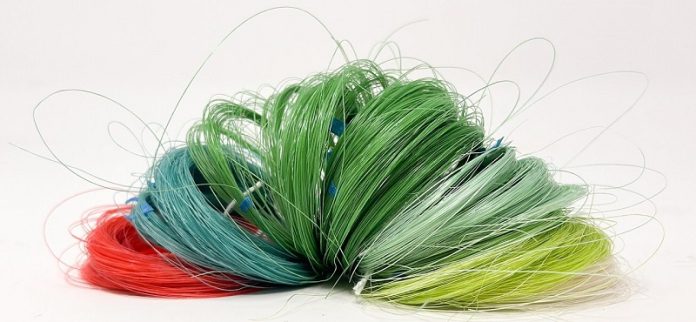
Imagine a T-shirt you can wear a few times and then dissolve in water to create a new shirt.
This futuristic concept is now closer to reality thanks to researchers at the ATLAS Institute at the University of Colorado Boulder.
They have developed a machine that creates textile fibers from sustainable materials like gelatin, which can dissolve in hot water within minutes to an hour.
Their findings were published in the journal Proceedings of the CHI Conference on Human Factors in Computing Systems.
The research team, led by Eldy Lázaro Vásquez, a doctoral student at the ATLAS Institute, presented their work at the CHI Conference on Human Factors in Computing Systems in Honolulu.
Michael Rivera, a co-author and assistant professor at the ATLAS Institute and the Department of Computer Science, explained the potential impact: “When you don’t want these textiles anymore, you can dissolve them and recycle the gelatin to make more fibers.”
This innovation addresses a significant environmental issue. In 2018, Americans added over 11 million tons of textiles to landfills, accounting for nearly 8% of all municipal solid waste that year. The researchers hope to offer a sustainable alternative for the fashion industry.
The machine they developed is compact and affordable, costing just $560 to build and small enough to fit on a desk. Lázaro Vásquez believes this device can empower designers worldwide to experiment with creating their own biofibers.
“You could customize fibers with the strength and elasticity you want, the color you want,” she said. “With this kind of prototyping machine, anyone can make fibers. You don’t need the big machines that are only in university chemistry departments.”
This development comes amid a growing interest in “smart textiles,” like Levi’s Trucker Jacket with Jacquard by Google, which integrates sensors to connect with smartphones. However, such garments are difficult to recycle due to the combination of materials used. In contrast, the gelatin-based biofibers offer a more sustainable option.
The researchers started with gelatin, a protein found in animal bones and hooves, often discarded by meat producers. Lázaro Vásquez sourced gelatin powder from a local butcher shop.
The team’s machine uses a plastic syringe to heat and squeeze out droplets of a liquid gelatin mixture. Rollers stretch the gelatin into long fibers, similar to how a spider spins silk.
The fibers pass through liquid baths where bio-based dyes or additives can be introduced. For example, adding genipin, an extract from fruit, strengthens the fibers.
As a proof of concept, the researchers created small sensors from gelatin fibers, cotton, and conductive yarns. When these patches were submerged in warm water, the gelatin dissolved, releasing the yarns for easy recycling.
Designers could modify the fiber chemistry to make them more resilient, ensuring they don’t dissolve in the rain. They could also experiment with other natural materials like chitin from crab shells or agar-agar from algae.
Lázaro Vásquez emphasized the importance of considering the entire lifecycle of textiles: “We’re trying to think about the whole lifecycle of our textiles. That begins with where the material is coming from. Can we get it from something that normally goes to waste?”
This innovative approach could revolutionize the fashion industry, offering a sustainable solution to textile waste and promoting a circular economy.



